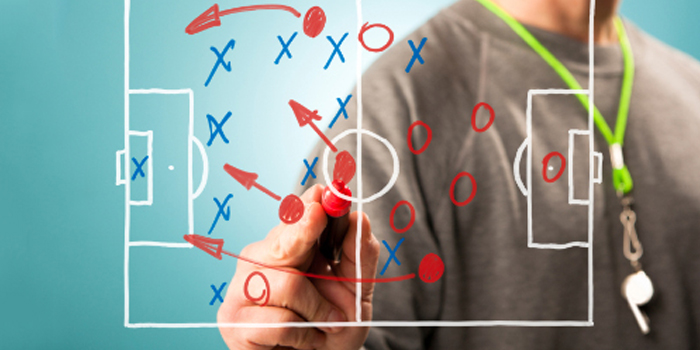
A few years back, I was sitting on my front porch relaxing with a nice beer when my world changed forever. I remember it like it was yesterday. It was a warm, summer evening. My son was playing, and I was just enjoying the birds singing. Then I heard a buzz in my pocket. I rarely answer my cell phone, but when I saw that it was JL Holdsworth calling, I knew that I had to take the call.
For those of you who have never received a call from JL, it usually goes like this: “Hamer, why is it that everyone is terrible at their jobs and they stink in life?" (edited for the PG crowd). I laugh and JL continues explaining why people need to be punched. JL and I are friends because we're pretty much the exact opposite in almost all aspects of our lives. We're like the odd couple. JL always has some really good information to share though and he is much smarter than he lets on.
WATCH: Pushing the Field Forward at The Spot Athletics
On the occasion of this phone call, JL told me about Cal Dietz and this new system he was working on with him called Reflexive Performance Reset (RPR). When JL said it would change my life, I didn't believe him, but it turns out he was right. RPR has a lot to do with breathing. This really piqued my interest because I had recently started working with my athletes on breathing. It even tied into some of the meditative work that we had been doing. We started doing some work with the athletes post-lifting to try to get them to respond to a more parasympathetic state. I’ve found that this is a huge missing piece in recovery, but I was missing a lot still. Hopefully, in this article, I can share some of what I’ve learned after spending a weekend with JL.
Since that call, JL, Cal, and Chris Korfist have done a great job educating many people about RPR. I hadn't had the opportunity to take one of the RPR courses until this week when JL asked to hold a clinic at my university, which is what led to my weekend of JL.
Friday Night
We had a ton of great coaches in town for the RPR clinic and I wanted to get a chance to learn from all of them. With this in mind, I invited quite a few out for dinner the night before the clinic. I'm very fortunate that many of the best strength coaches in the world are willing to openly share and discuss ideas with me. So we met JL, JT (one of JL’s assistants), the Bucknell strength staff, and Andy Deck at a sports bar in Sewickley, Pa.
When we arrived, Cody and Jerry from Bucknell were already there and had already ordered their food. We sat down, ordered some food and drinks (except bodybuilder Andy who brought his 276-gallon cooler with him), and immediately started talking shop. I've found that I learn more in impromptu meetings like this than in most clinic/conference settings.
The biggest lessons of the night were:
- JL loves the difference between the back squat and the front squat.
- In order to be strong, you must have an attitude.
- Programming is overrated; coaching and hard work are underrated.
- We will always be just one cog in a greater, overall system.
We also learned that Cody can eat a 2.5-pound hamburger and one pound of French fries in 28 minutes, an astonishing feat but a terrible thing to watch.
Photo credit: www.muhdo.com
Saturday — Clinic Day
On Saturday, the clinic started at 8:00 am. JL arrived and got right into it. He started by showing us the anti-rotation test. He sold this as the test that will get buy-in, and he is 100 percent correct. It was amazing how in 30 seconds we actually made a significant difference in how strongly a person reacted to an external force.
Here's the basic rundown of the test: Have the athlete stand to face you (with the feet squared). Place one of your hands on the front of one shoulder and the other hand on the back of the opposite shoulder. Instruct the athlete to not allow you to move him. Now try to rotate the athlete.
JL used a 1, 2, 3 count to prepare the athlete. The point was not to kill the athlete but to see how strongly he fights against you. JL said that he only tests one side because this isn't a test of unilateral strength. It's just a test of how strong the athlete feels (you could test both sides, but it isn't necessary).
After you and the athlete get a feel for how strong he is, have the athlete cross his hands over his chest. Now stand beside him and place one hand on his arms. With the heel of your palm, strike the athlete's spinal erectors like you are burping a baby (clearly don’t try to break them). Follow the erectors in a U pattern up and down the spine three times (three Us). After you've done this, return to the test. When we did this, only two people (out of the 25 in the room) didn't feel an improvement in strength.
A little disclaimer here: if you don't know your athlete or you aren't sure if the athlete trusts you, I wouldn’t perform this test. I've used it with some of my staff and athletes, but I wouldn't do this to someone new.
Why did participants feel an improvement in strength? I believe that there is a multitude of reasons why participants showed a marked improvement in strength. We're increasing blood flow to the muscles of the back by striking the tissue, and we're exciting the neurons around that tissue. We're emotionally waking the athlete up with the striking motion, and we're manipulating the tissue much like a foam roller would but in a more aggressive manner.
After the anti-rotation test, we went through an entire warm-up incorporating RPR. It was great to see how one could implement the warm-up without having to touch the athlete at all. This is important to RPR. It's hands-on, but in many cases, we shouldn't be touching the athletes. Knowing that, JL walked us through how to have an athlete self-administer RPR. The improvement we saw was amazing. Mobility and strength went up in every person I saw JL work with. He spent a ton of time making sure that we could implement this as soon as possible with our athletes, and I'm glad he did because this is the meat and potatoes of the RPR method.
MORE: A Strength Coach's Dream: Reflexive Performance Reset
The second half of the day was spent practicing RPR and learning more about the whys of it. I still have more questions than answers even though I saw the system work over and over again throughout the day. As the day progressed, JL showed us a few amazing things that we could use with our athletes. Using me as an example, JL had me hold my arm out to the side, stare out in front of me, and resist him from pushing me down. Then he had me do the same thing while staring at his finger closely in front of my face. I did OK with the first part but miserably failed the second part. It was as if all my strength had been taken away. I wouldn't have believed that this was possible if I hadn't experienced it first-hand. Of course, in stereotypical JL fashion, JL said to me, "See? That’s your problem" and walked away without telling me what to do about it.
One major theme throughout the day was breathing and belly breathing. This is something that I've been working on a ton with my athletes, so it fell into a perfect place in my head. I spend a decent amount of time each and every week doing meditative practices with my athletes, and I've also been spending time working on breathing on its own. JL made a great point—the only thing that we must do is breath. Without air, we'll all die in about five minutes, so everything else that we do is just gravy.
Whether you love or hate the idea of Reflexive Performance Reset, it works! Some people will think it's voodoo and not worth their time, but I'm here to tell you that you're wrong. I have a few theories as to why it works, but I'm sure people smarter than me will have different reasons. Here's my list:
- RPR is a great warm-up. You get your body moving!
- It works on a muscular level. It's similar to a massage.
- It works on the fascia.
- It excites the nervous system.
- It gets the lymphatic system moving. This one cannot be overlooked. Many of the areas you work are close to lymph nodes, and because the lymphatic system doesn't have a pump, you're acting as the pump through movement.










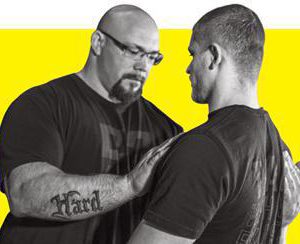
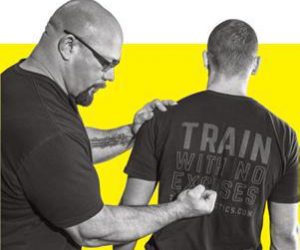
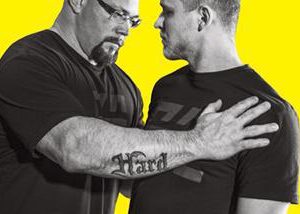
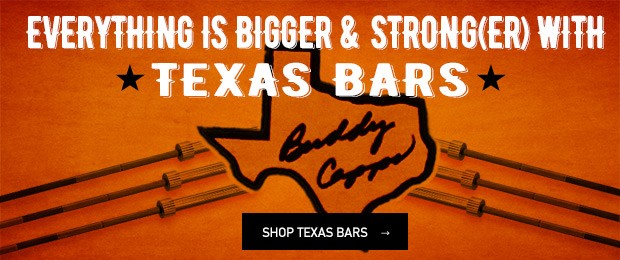
2 Comments